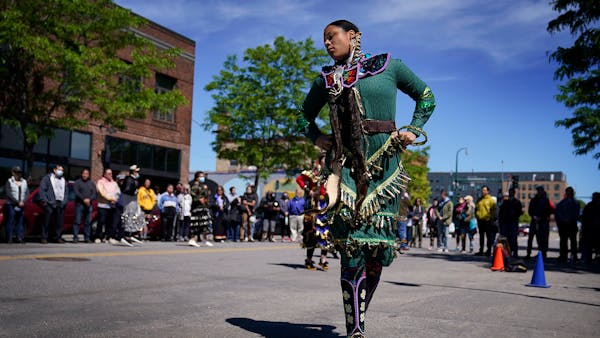While more than 9,000 nonprofits in Minnesota are seeing brighter days after a difficult 2020, many are just starting out on the long road to recovery from the COVID-19 pandemic.
Fewer nonprofits are cutting staff or facing financial distress. And a third of the respondents in a new survey say they've seen a spike in donations and grants recently, according to a report released this month by the Minnesota Council of Nonprofits.
It's what Jon Pratt, executive director of the Council of Nonprofits, is calling the "signs-of-the-recovery phase. Communities need these organizations and fortunately, for the vast majority, they're coming back."
At the same time, some nonprofit leaders are bracing for donor fatigue after an outpouring of generosity in 2020.
A national report this month by Giving Tuesday forecasts that charitable giving will likely return to pre-pandemic levels after rising 5% last year. Many local leaders worry about uncertainty in government and foundation grants for the rest of this year.
A coalition of Minnesota nonprofits, including the Council of Nonprofits and the Greater Twin Cities United Way, are lobbying Gov. Tim Walz and legislative leaders to create a "nonprofit resiliency and recovery fund" with $50 million in federal funds to bolster nonprofits, mostly culturally specific organizations and small nonprofits outside the Twin Cities. It's the largest request the nonprofit sector has ever made to the state to support its organizations.
"Our sector has really seen a lot of instability," said Jonathan Palmer, executive director of the Hallie Q. Brown Community Center in St. Paul. "It would allow us to continue to serve people in need."
Throughout the pandemic, most social service nonprofits stayed open, shifting programs online and moving food shelves to drive-up models. More Minnesotans visited the state's 350 food shelves in 2020 than in any year on record.
Palmer's nonprofit last year served well more than twice the average number of people served annually, providing meals and other needed services to 100,000 people who trekked from Lakeville, Coon Rapids and as far as Rochester.
The center did it all without expanding its staff of 26 employees and while facing a shortage of volunteers, forcing Palmer and others to help with packing food boxes or tutoring students. Palmer is planning to reopen programs and meetings in person later this year, but he's relying more on donations than earned revenue, and he doesn't expect demand for food assistance to return to pre-COVID levels anytime soon.
"We thanked health care workers, we thanked baggage clerks, we thanked the emergency [crews] and police," he said. "The nonprofit sector is one of the ones that people just kind of didn't think about. ... Our staff is just really exhausted because we've been on the front lines."
Some groups dissolved
Palmer worries that more nonprofits could close if philanthropy and state aid don't keep pace. The number of nonprofits that said they were planning to close or merge during the pandemic has increased about 15% from 2019. Nearly 200 notified the state Attorney General's Office of their intent to dissolve between March 2020 and March 2021.
"There are as many unknowns as there were last year," said Ann Gaasch, executive director of FamilyWise, a Minneapolis nonprofit that provides child care and parenting education. Policymakers "need to look at the sustainability of the nonprofit sector."
Minnesota's nonprofit sector employs 14% of the state's workforce. About 40% of the state's nonprofit employees filed initial unemployment claims in 2020, when the sector's workforce shrank by 10%, according to state data.
A survey conducted in March by the state Council of Nonprofits, the fourth that the group has done during the pandemic, found that 30% of more than 300 nonprofits reported having less than six months before exhibiting financial distress. That was lower than 44% reported last July and 61% a year ago.
The Phyllis Wheatley Community Center in Minneapolis is in good shape, said executive director Suzanne Burks. The center has recorded more expenses from extra cleanings and other COVID-related costs, as well as added security to counter an influx of North Side crime. But that was offset by about double the number of grants streaming in from corporations, foundations and government.
Burks said she's hopeful as Phyllis Wheatley prepares to restart senior classes, youth programs and other in-person services. "We're a community center, we need to be open," she said.
'Donations kept us alive'
In the Minnesota Council of Nonprofits' survey, respondents also said they're concerned about reopening offices, addressing racial injustice and hanging onto or recruiting employees amid burnout.
In St. Paul, Nancy Brady's 80 employees at Neighborhood House are exhausted. In 2020, the nonprofit helped 23,000 people with free food, financial aid to prevent evictions and other programs. That was a 53% increase in the number of people in need from the usual year, yet Brady's staffing didn't grow.
"Our staff really, really stretched themselves to meet the demand," said Brady, Neighborhood House's executive director.
Neighborhood House got a $500,000 federal Paycheck Protection Program forgivable loan to pay for staffing and prevent furloughs, as did more than half of the state's nonprofits. That loan, as well as 1,500 new donors and a record in donations, helped replace other lost revenue.
Brady plans a hybrid in-person/online fundraiser this fall after shifting it online last year. But she worries that donors won't keep giving at the same level, and she's not expecting any more federal aid.
"The community stepped up for us [and] donations kept us alive," she said. "We are part of what has kept families whole throughout this pandemic. We need to remember it's not over and we continue to need the support of the community and the government."
Kelly Smith • 612-673-4141
Carolyn Parnell, 'trailblazer' who served as Minnesota's first IT commissioner, dies


